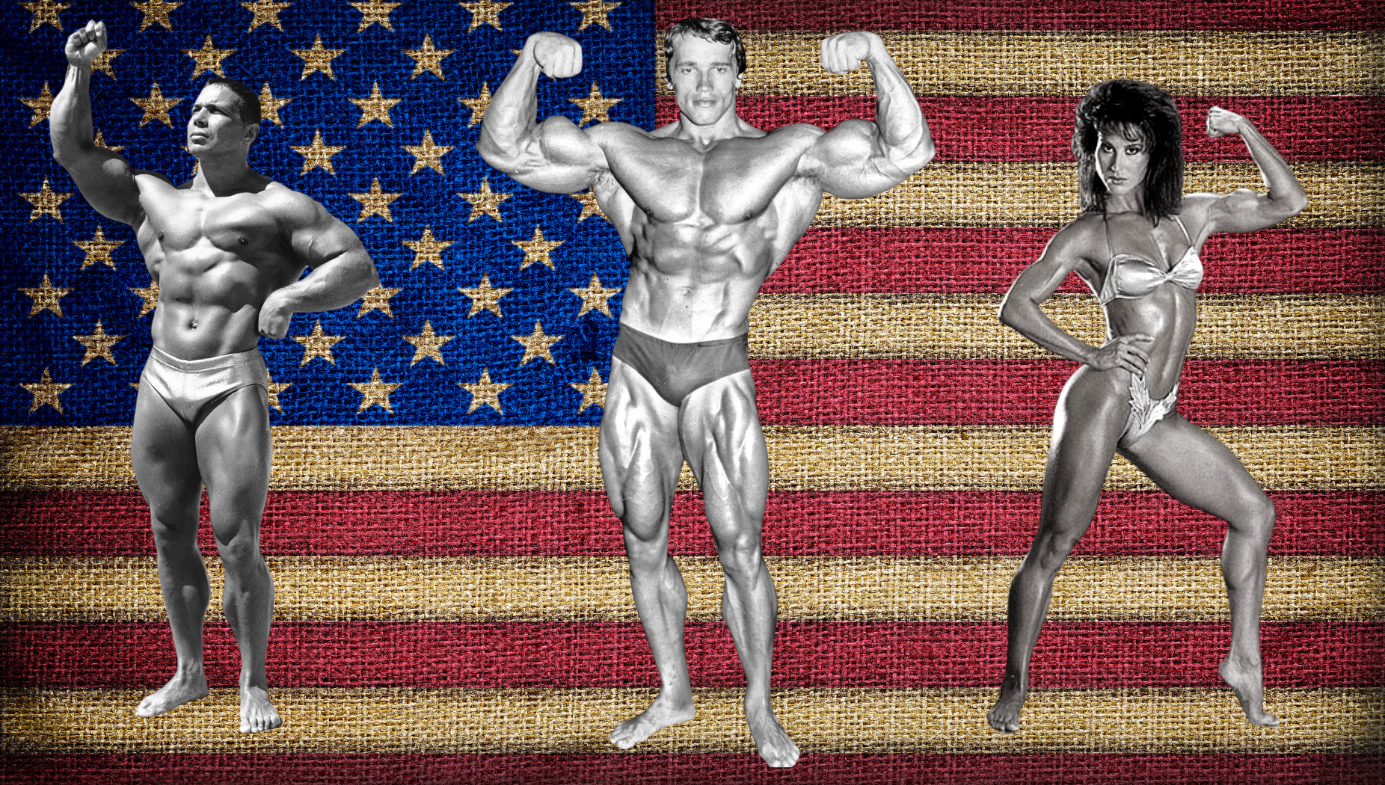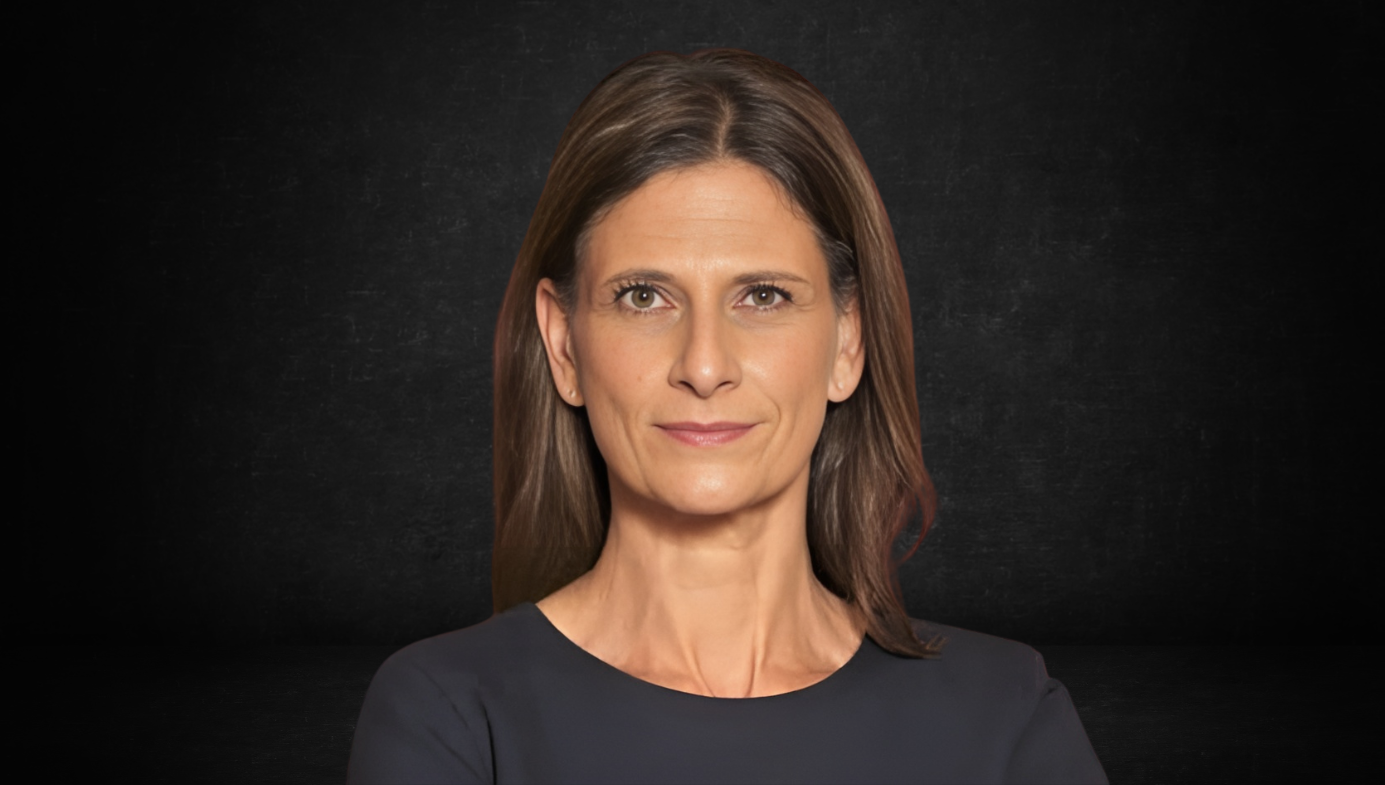Heavy Lifting
Natalia Mehlman Petrzela’s ‘Fit Nation’ offers a fascinating but frustratingly selective history of America’s physical fitness obsession.

A review of Fit Nation: The Pains and Gains of America’s Exercise Obsession by Natalia Mehlman Petrzela, University of Chicago Press, 424 pages (February 2023)
The idea that developing the body is part of developing one’s mind or soul has been a part of Western thought for 2,500 years. That is not to say that this ethical injunction has been without its detractors and critics. Diogenes, the unruly ancient Greek philosopher, once defecated in the middle of the Olympic stadium during the Games to protest a culture that revered athleticism. During the 18th century in Europe, corpulence was held to signify a well-lived aristocratic life. And the sinewy, hardened physiques of immigrant laborers in 19th-century urban America were dismissed by the upper classes as crude and unsophisticated.
The body, in other words, is rarely a neutral, value-free entity in our shared cultures. One of the primary themes of New School historian Natalia Mehlman Petrzela’s latest work, Fit Nation: The Pains and Gains of America’s Exercise Obsession, is how Americans have, for the last 130 years, conceptualized, bickered, and fought to understand the importance of their bodies through physical fitness.
As an exercise enthusiast and social historian, Petrzela is not only interested in the history of what is now a multibillion-dollar industry, but also in how fitness has become a “moral necessity”—and a costly one at that. It is a historical grievance in the making, as Petrzela believes that fitness ought to be a social good and an “imperative of public investment.” This is what strikes at the heart of what she calls the “Fit Nation.” And what is the Fit Nation? “A society in which exercise infiltrates practically every quarter of American life—in both problematic and promising ways—but in which full, autonomous participation depends on spending power rather than citizenship.”
Fitness in this context becomes part of what the turn-of-the-century sociologist Thorstein Veblen called “conspicuous consumption.” That is, the way in which individuals not only consume or use certain products or services, but how their very usage confers a mark of high or low distinction. The difference as it were, between belonging to a high-end wellness club like Equinox or opting for the cheaper Planet Fitness route. Veblen’s idea of conspicuous consumption first appeared in his 1899 work, The Theory of the Leisure Class, and could not have arrived at a more apposite historical juncture.
Only a few years earlier, the Prussian-born strongman Friedrich Wilhelm Müller, better known to the world as Eugen Sandow, had hosted the first bodybuilding competition in London. Petrzela informs us that Sandow was a proponent of the idea that building an aesthetically pleasing physique was tantamount to rising above the sickly masses. When the Prussian arrived in New York, he earned renown as a supremely self-assured prophet performing feats of strength before an awestruck crowd of carnival-goers. And it is here where the story of Fit Nation begins.
From their humble beginnings under the big-tent circuses, strongmen and strongwomen were—and in many ways continue to be—oddities to the wider American public. Those who lumber around with heavy musculature are still met with any number of reflexive reactions, from envy to disgust. Eugen Sandow, Katie Sandwina, Charles Atlas, and Siegmund Breitbart were members of the first generation to navigate the obscurity of fringe circus acts and sideshows. Sandow, in particular, was conscious of how a muscular physique could display not only strength but also prestige.
The author of numerous books and magazine articles, Sandow exhorted his male readership to develop their bodies, harkening back to the great marble statues of Rome and Greece, which he felt were exemplars of a truly masculine physique. He also publicized one of the foundational principles of strength training and muscle hypertrophy: the notion of progressive overload, or the lifting of heavy weights at less volume over time. For his efforts—both at self-promotion as well as popularizing lifting—Sandow became an icon for bodybuilders the world over. Every year, a golden statue of him is awarded as a prize at the Mr. Olympia bodybuilding contest in Las Vegas.
It is certainly true, as Petrzela points out, that Sandow had a deep streak of vanity, which he expressed in both his acts and writing. But he was also a keen observer of his time. The late 19th century bore witness to the breakneck pace of industrialization, and even Sandow was not immune to adopting a high-minded Victorian reformism as pungent as the billowing factory smokes across England. “Civilization” he proclaimed, “has, indeed, become a slaughtering-car crowned by a grinning effigy of Comfort, before which man blindly and voluntarily hurls himself in his own ignorance.”
But Sandow’s hard appeal to physical greatness was softened when he observed the crippling effects of World War I on British troops as they returned from the front. Life as Movement: The Physical Reconstruction and Regeneration of the People, published in 1919, was Sandow’s attempt to broaden his message that even the most basic moves towards better health were beneficial, whether they were undertaken by the desk-bound, middle-class Englishmen or by the somatically scarred Tommy. None of this, however, appears in Petrzela’s discussion of Sandow.
For those interested in a straight-shot, clean history of fitness, Fit Nation is not the read you might expect. To her credit, Petrzela lays out her cards and political commitments within the first few pages of her book (what she calls her “warm-up”). Sandow, far from being the revolutionary of fitness, is portrayed as an arrogant, self-indulgent racist. And there is certainly no need to make apologies or defend his actions. In vivid detail, Petrzela describes how the father of bodybuilding assaulted a young black New York bellhop, dangling him in the air for refusing to shine his shoes on demand. In chapter after chapter, the reader is treated to anecdotes of abuse and bigotry.
I was shocked to discover the harassment of women marathoners, whose exclusion from the sport was often met with physical violence and assault. We are told of the hapless housewives and their children who were enlisted into the Cold War’s fat paranoia. Women were chided to “firm up” their post-partum figures, and kids were swiftly introduced to physical education classes, courtesy of Presidents Eisenhower and Kennedy. This is to say nothing of the ever-present specter of homosexuality looming over the psyches of straight white men, who perhaps wanted to lift but did not want to mingle in a growing gay niche that was bodybuilding. Fit Nation leaves no stone unturned in demonstrating the toxicity of the world of fitness.
In fact, there is so much handwringing that by the time I arrived at the chapter on Jazzercise I had become adjusted to the predictable litany of social injustices churned out in nearly every paragraph. As if to provide some relief, Petrzela occasionally attempts to countervail the emotive impact wrung from this catalog of social sins by reassuring the reader that, with every passing decade, fitness became more empowering to future generations. But even then, each chapter closes with a nagging feeling that fitness culture could not redeem itself from one watershed decade of the 20th century to the next. When I consider my own fitness journey and engagement in the culture, I find this emphasis interesting, if not puzzling.
A neglected area of fitness is the impact of barbell training in the United States. In the first sections of the book, weight lifting is a sort of throwaway cliché—the “dank weight room” or a “dank men’s gym” and so on. But it is especially telling that CrossFit is described as “militaristic.” While Fit Nation does discuss the very early days of Muscle Beach, and includes the odd reference to Gold’s Gym, Petrzela seems to believe that lifting weights is either too masculine or too reactionary. Instead, she pays particular attention to what she calls “revolutionary” forms of working out, such as dance classes, running, and yoga.
As a result, there is little of substance on the trifecta of strength training: bodybuilding, powerlifting, and Olympic weightlifting. No mention is made of the Golden Era of bodybuilding from the 1960s through 1980s, which saw a diverse array of men compete and win their chance to raise a Sandow trophy. It was more than just Arnold Schwarzenegger or his predecessor, Steve Reeves. There was also the Frenchmen of African descent, Serge Nubret, who they called “The Black Panther” and Robby “The Black Prince” Robinson, to name but a few of the legends who comingled at the same gyms as white bodybuilders, and who formed close bonds of friendship. In powerlifting, there were women like Jan Todd and Beverly “Bev” Francis, the Australian-American whose records in powerlifting and bodybuilding paved the way for future female champions.
In Olympic weightlifting, meanwhile, there was Tommy Kono, who was of Japanese descent and widely considered to be the world’s greatest weightlifter. Then there was the African-American John Davis, the first man to clean and jerk over 400lbs. Both men were members of the York Barbell Club in York, Pennsylvania, the legacy of which would reach far beyond the confines of the club itself. Today, its cast-iron tonnage of plates and dumbbells can be found scattered across thousands of garages, basements, and yard sales, serving as rusty testimonies that strength training in America was often done in homes, away from overpriced gyms.
It may be that Petrzela’s omission of bodybuilding, powerlifting, and weightlifting is due to the fact that they are technically sports, and therefore outside of the scope of Fit Nation. But all three are also forms of exercise which become sports when they are made competitive. Moreover, all three of these sports saw their growth in garages as well as gyms and exclusive fitness clubs. This is especially true of powerlifting, which came to be seen as a sort of outlaw sport for working-class men throughout the Rust Belt and beyond. Construction workers, firemen, cops, soldiers, and landscapers have all held world records in what was once called “the odd lifts” due to their less technical appeal and their reliance on brute strength.
Since its inception in the 1950s, powerlifting has enjoyed meteoric success, particularly in the 2000s, when more and more federations began to form, all of which enjoyed a steady rise in female participation year after year. Olympic weightlifting coach and author Andrew Charniga’s book The Demasculinization of Strength argues that, since the late 1980s, greater female participation in weightlifting has produced a narrowing of the strength gap between men and women. “By the end of 2012” he writes, “the female [weightlifting] records constituted approximately 80% of the male records.” And what was the catalyst behind the growing participation of women in weightlifting? CrossFit. As Daniel Kunitz, author of Lift: Fitness Culture, From Naked Greeks and Acrobats to Jazzercise and Ninja Warriors, writes:
Between the 2012 and 2016 Olympic Games, membership in the USA Weightlifting (USAW) more than doubled, from 11,000 to over 26,000. But those numbers only account for people actively competing at local and national meets. Because of CrossFit, which incorporates those lifts, many hundreds of thousands of others are now engaged in weightlifting as part of their exercise routine.
In powerlifting, we see a similar upward trend of more and more women getting involved in competitions. In her 2017 article for Vice, Ilana Belfer notes that, between 2014 and 2016, the number of women competing in the sport at meets doubled from 3,000 to 6,000 competitors. But even this statistic, she points out, “only include[s] competitive lifters, not people who train recreationally but never compete—a demographic [Dave] Tate says is ‘probably the area of the sport that’s grown the most but nobody can quantify.’”
Also missing from the book is much discussion of YouTube, which has helped the proliferation of interest in fitness to spread internationally. While Petrzela is a historian of the United States, it would have been useful to hear her explore how the early days of YouTube captured the imagination of millennials in America. Aziz Shavershian, known simply as “Zyzz,” was an Australian online phenom who rose to fame in 2007 after his grainy, poorly-lit fitness videos went viral. Swarthy, muscular, but also trim, his physique harkened back to a time before the bloated physiques of modern bodybuilders dominated the Mr. Olympia stage. Zyzz came from an immigrant family hailing from Russia who settled in the Sydney suburbs. He never finished college and began working as a personal trainer and stripper. He used YouTube to implore his faceless male audience to stop feeling sorry for themselves and start lifting.
What began as an early instance of YouTube marginalia soon became part of the now-ubiquitous genre of Fitfluencers—videos showing workouts and a crude message of self-improvement. Zyzz’s unapologetic manner and regular use of profanity could be construed as youthful brashness and the characteristics of what today completes the “gym bro” personality. But his online popularity surged, not only because he exuded a puffed-up image of unhinged self-confidence, but also because he gave away his secrets. Instructing an early generation of male millennials, he taught them how to prioritize weight training and remain disciplined in front of a plate of rubbery chicken and white rice.
Moreover, Zyzz saw keeping fit as a lifestyle rather than just a way to stay in shape, and he cautioned his acolytes to keep pushing themselves in the gym and ignore criticism from non-gym goers. Those who followed Zyzz’s channel counted themselves as part of what is now known as the “Aesthetics Crew.” Young men in droves started going to the gym, donning their signature skimpy undershirts (“stringers”) while practicing the Golden Era-posing Zyzz was resurrecting in his videos.
In 2011, while vacationing in Thailand, Zyzz died of a heart attack, which many suspected was caused by his use of anabolic steroids. A year later, the International Federation of Bodybuilders, of which Schwarzenegger is a member, inaugurated a new category called Men’s Physique. While it is not certain that this was inspired by Zyzz and his international Aesthetics Crew, it would be difficult to see how Men’s Physique and its female counterpart, Bikini, could ever have emerged without it. Both divisions are presently the most competitive within the United States among men and women and it is a testament to the actual “influence” an Australian immigrant had online on American fitness culture.
Petrzela’s Fit Nation offers a fascinating look into the social history of American fitness. Her painstaking research illuminates a robust combination of archival sources and oral interviews, which promise to captivate—if not outrage—her intended audience. One way or the other, it is bound to strike a chord in the reader. After finishing the book, however, I wondered if the narratives Petrzela had chosen best represented the spirit and history of fitness.











